Food preparation is an undoubtedly creative act. Butchers, chefs, and bakers meticulously cut or blend ingredients, tastes, and designs to create palatable products with the intention of tickling a consumer’s senses –– to generate an experience of enjoyment, satisfaction, and reflection. Michelin star chef Niki Nakayama believes, “In food and in cooking, art is a byproduct in the pursuit of deliciousness.”
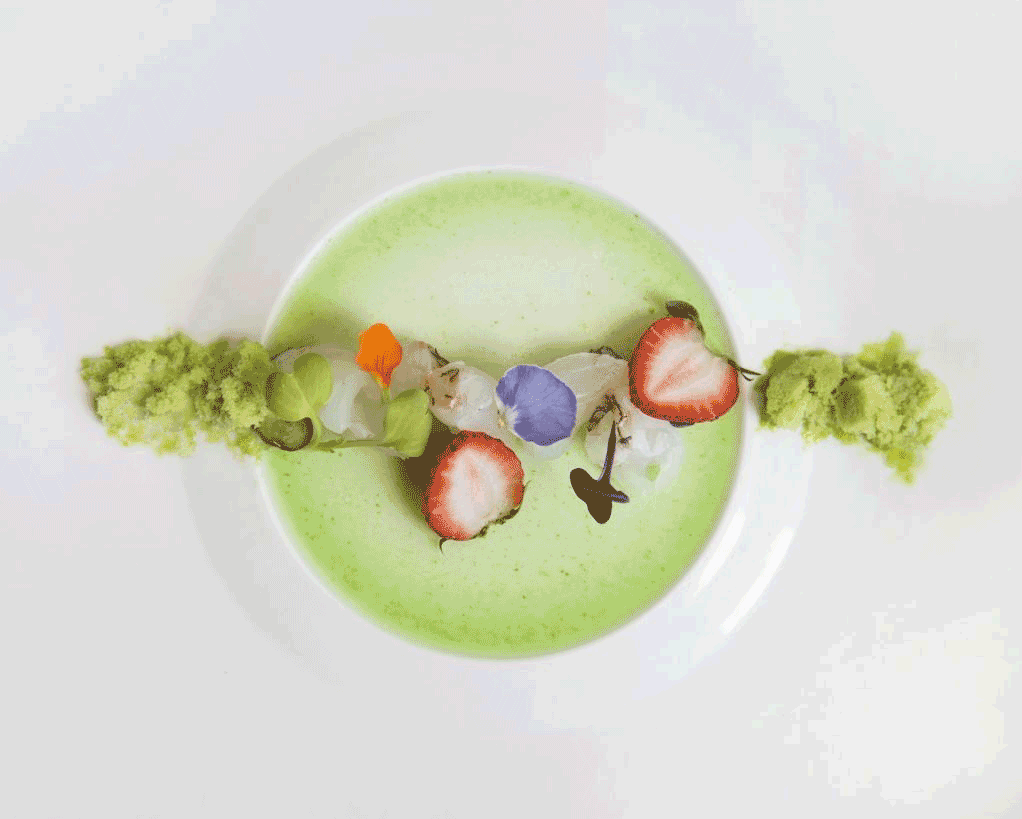
Likewise throughout art history, copious visual artists have regarded foodstuffs as valuable ingredients for the pursuit of art-making. “In fact, while food as iconography has inhabited still lifes and banquet scenes for centuries, the actual experience of it as sculptural material, as well as the performative acts of eating or processing foods, have become part of the artistic language in the context of the avant-gardes."
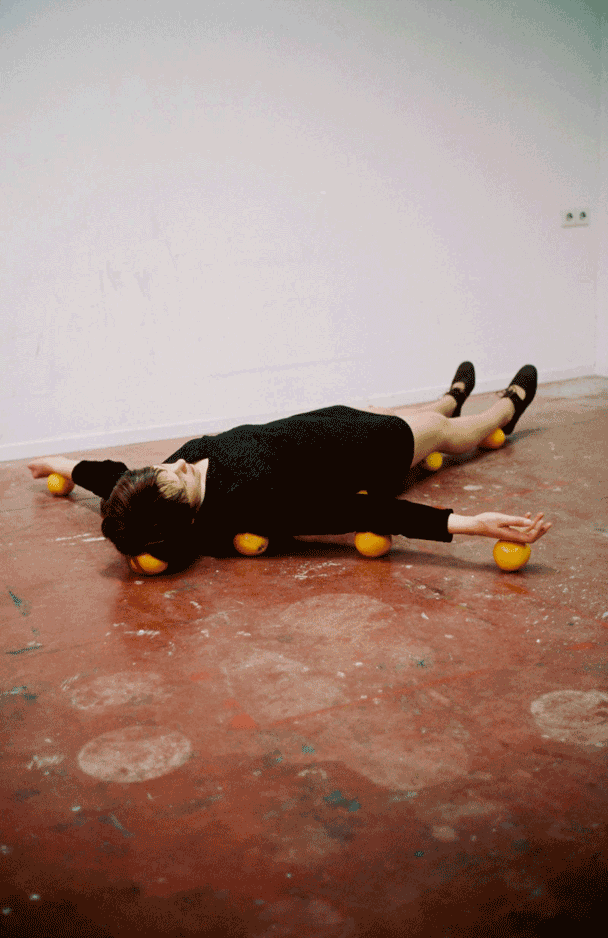
Numerous artists have used foodstuffs, or the philosophies that accompany food, as a way to generate new methodologies in art. For decades, food art –– “art which uses food as material and process” — has been a counter-culture practice of art-making. In the opinion of The Taste of Art authors, Silvia Bottinelli and Margherita d’Ayala Valva, “Artists who choose to incorporate food in their work tend to do so as a way to challenge mainstream expectations” . Progressive, and according to Bottinelli and d’Ayala Valva, cross-disciplinary, food artworks exemplify practices which deal with “diverse mediums, modes of participation, as well as commentaries on global and local societies” . The presence of consumable material is seen in an array of dynamic artforms including performance, installation, and participatory art. Artists are drawn to the nature of edible sustenance as it highlights an intrinsic and essential purpose to humanity. What’s more, the vital life cycle of foodstuffs embodies a life-path akin to that of humans –– both naturally occurring animal foods, vegetables, as well as human beings evolve through processes of reproduction, growth, and decay. A legion of artists utilize food as material for its mortality, and consequently, foodstuffs’ innately ephemeral as well as perishable qualities.
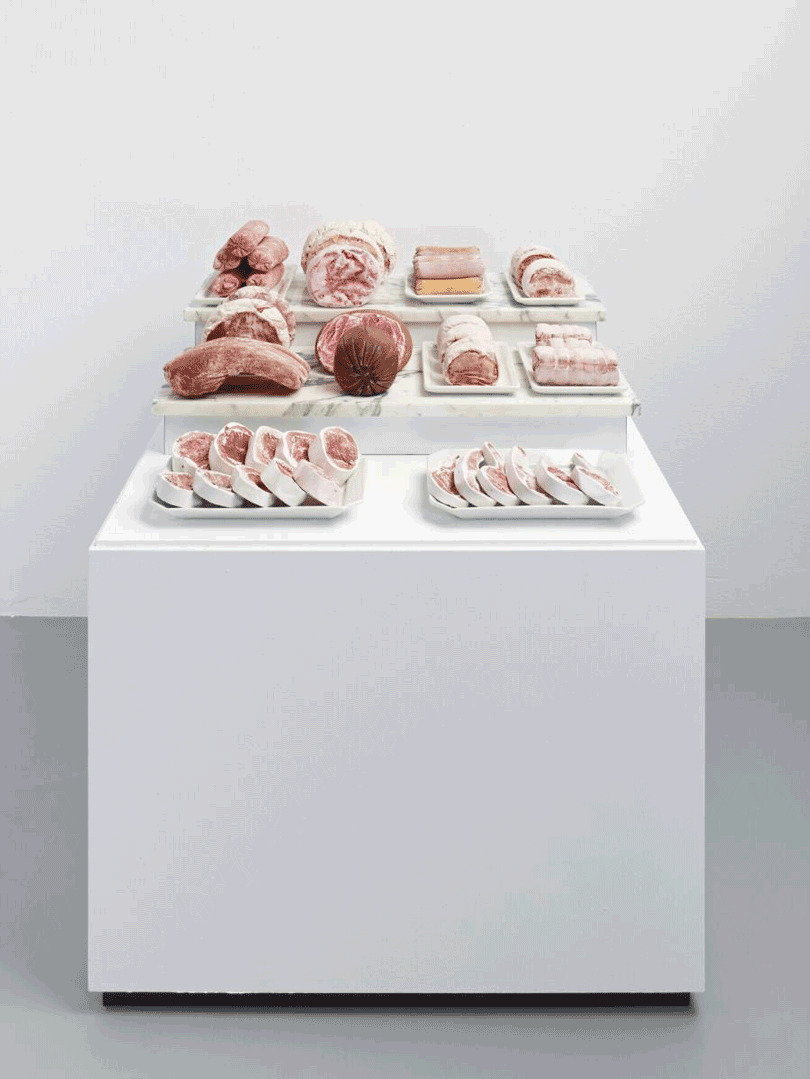
Food Material’s Subtle Success to Create Participation in Art Viewing and Making
The publication The Taste of Art suggests that the incorporation of foodstuffs in contemporary artworks has contributed to the dissolution of spectator barriers in art galleries. Since the late 1950s, artists have challenged art practices that encourage passive spectatorship by generating artworks that require participation from audiences. According to Rudolf Frieling, “Participation in art in its most minimal form constitutes a dialogue between the artist and the public; in its most complex form it involves crowd-sourced production processes that are initiated only by artists.”
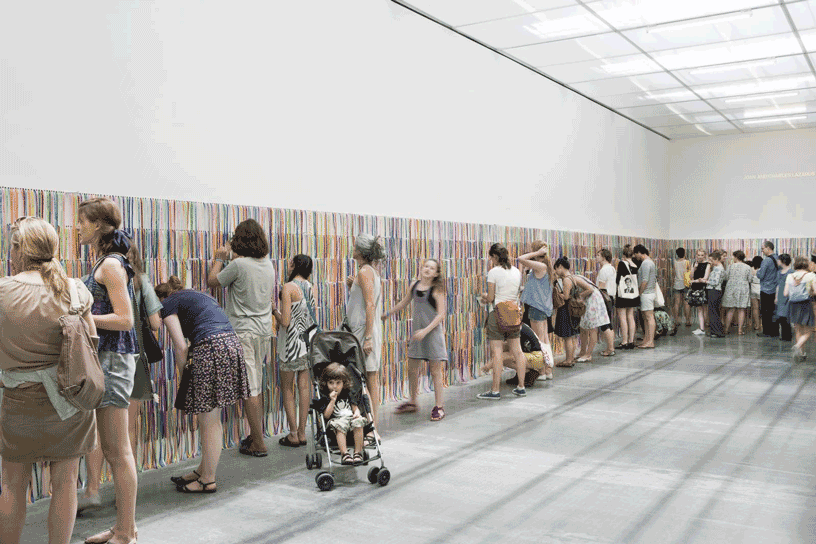
Derived from a selection of 5,800 oranges, a box frame of wood, and a base of plastic, Soul City (Pyramid of Oranges) from 1967, is an interactive and audience-specific piece created by the South African artist Roelof Louw. Each time the work is exhibited, it is replenished with “fresh, thick-skinned oranges, stacked into the shape of a pyramid,” –– a form that resembles how produce is stacked at grocery stores. When it is installed, viewers are invited to help themselves to its contents, causing the work to steadily transform and shrink. According to the Tate, the collector of the piece, “The final structure is both rationally arrived at and ordered, and yet evokes a sense of collapse or dynamic change.” Furthermore, “without the intervention of visitors helping themselves to the fruit,” the structure is subject to putrefaction and disintegration. The piece invites viewers to engage with it in a physical, material, and conceptual way by providing audiences the chance to consume its substance alongside its presence.
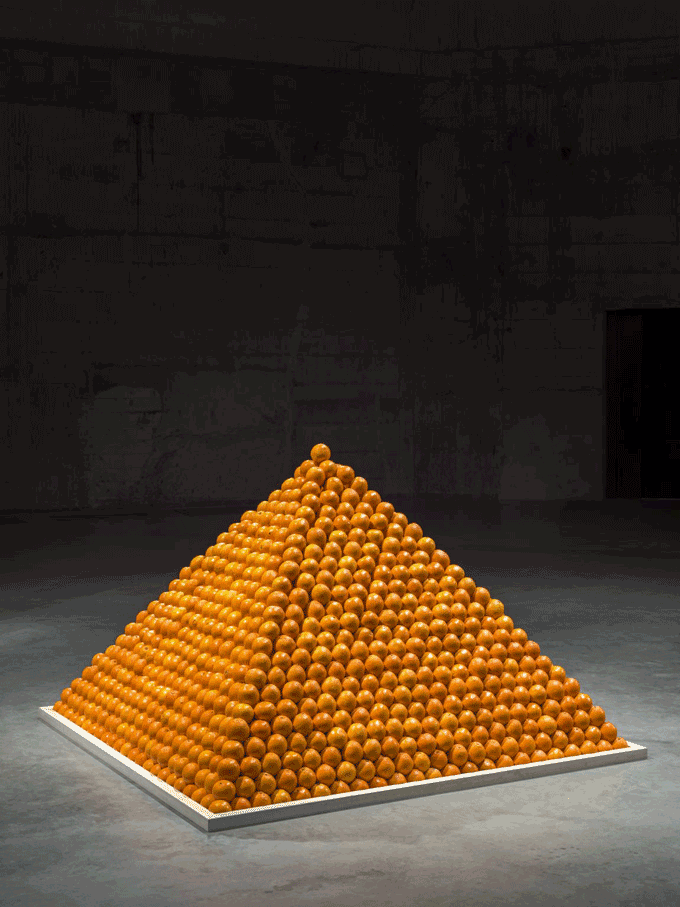
In Felix Gonzalez-Torres’ conceptually similar piece to Soul City, “Untitled” (Portrait of Ross in L.A), viewers are invited to physically take a portion of the artwork, a piece of candy, with them. These examples of food art set precedent by challenging how audiences engage with and consume art. The audiences of these artworks are important and their participation provides essential meaning to the works. Food acts as an approachable and familiar material that viewers are willing to accept and take as a token of experience.
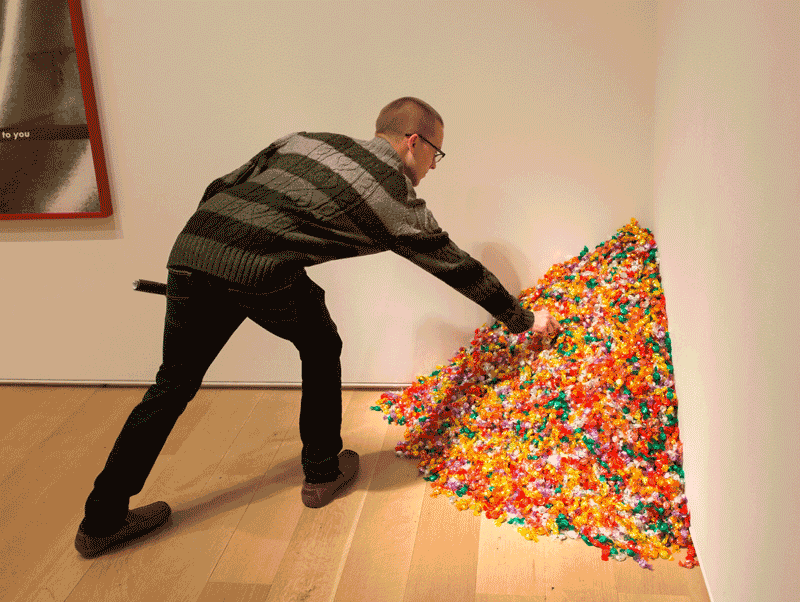
The egg has long been a conceptual and physical medium for artists –– it was once a binding agent for pigments of paints and likewise a component used with silver nitrate to produce photographic prints. Furthermore, “eggs have been a fertile subject for artists,” both for their abundant appearance in still lifes and sculptures and for their symbolism of reproductivity, birth, and femininity. Since 2017 British artist, Sarah Lucas, has staged multiple events at galleries in Berlin, Mexico City, New York, and Los Angeles where she has invited “female [identifying] friends and collaborators to lob 1000 eggs at white gallery walls.” One Thousand Eggs: For Women is a reoccurring participatory piece that uses eggs as a medium to simultaneously create a painting, sculpture, and performance artwork. According to New Museum’s curator Margot Norton, Lucas “puts the fate of the egg – typically understood as the female reproductive cell – into the hands of women.” In this piece, eggs represent the human form, and also act as an agent which binds participants together to create a polyvocal artwork that signifies resistance, embodies control, and gestures for the right to claim power of one’s body and reproductive system.
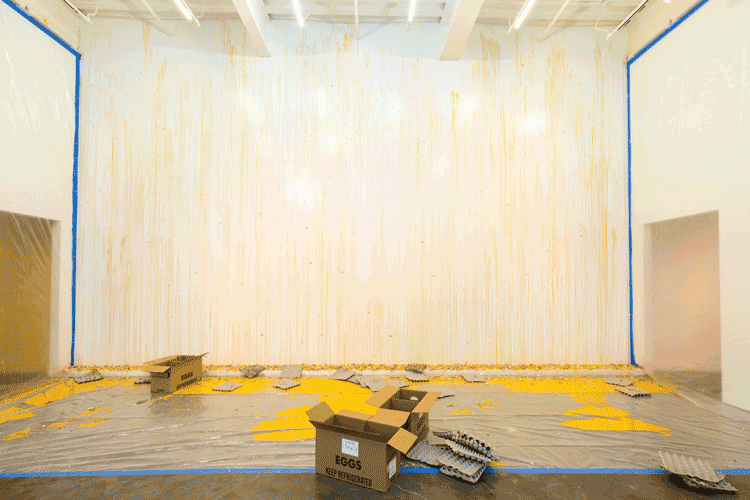
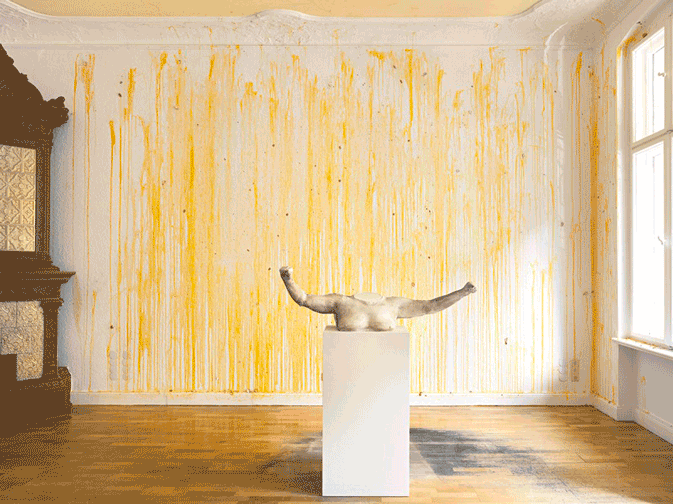
Aging Spices, Fruits, and Chocolates: Sensory Sculptures that Drive Memory and Artistic Formation
Artworks which hold historical, societal, monetary value are traditionally seen as everlasting objects . When working with foodstuffs as material, artists realize the precarity of food substances –– most edible items are subject to deterioration, rotting, and even dissolvement. For many artists, the precarity of food material is alluring. They believe that certain artworks should be ephemeral and imperfect. In their eyes, artworks should obtain sensory qualities such as the emittance of smell and should be subject to natural aesthetic changes. Foodstuffs “follow their natural course of decay with their constantly changing odor, colour, and texture,” (Foeschner, 95).
According to the MACBA in Barcelona, Dieter Roth’s practice consistently “incorporated such diverse and unusual elements as chocolate, cheese, sugar, birdseed, hamburgers and chips.” “Turning them into pictorial material,” Roth created works such as his Gewürzkasten (or Spice Cabinets). Made in collaboration with the book binder, Rudolf Reiser, and a cabinet maker in Dusseldorf, Gewürzkasten materialized a series of wood and glass cabinets filled by swirling layers of various spices. MACBA states that, “Although the piece invites a visual reading of the different colours and textures…the work primarily addresses a sense often overlooked in the visual arts: smell.” Roth famously stated that, “smell is the great vehicle of memory.” Many of Roth’s works showcase the pungent aroma of decay. As an artist, Roth was “interested the structure of decay,” and his works often illuminated how decay contributes to the evolution of formation, colour, and mutation of objects.
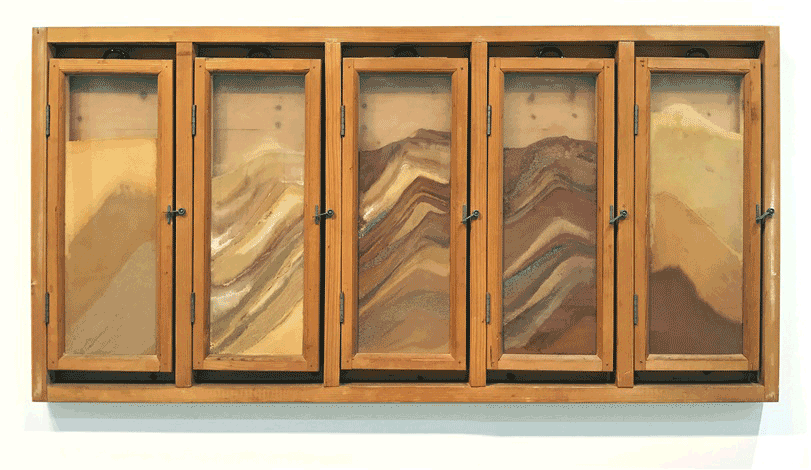
In American artist Zoe Leonard’s work, Strange Fruit (1992-97), decaying food material serves as a vehicle for trauma, healing, and memory. To create the work, Leonard consumed nearly three hundred fruits –– bananas, oranges, grapefruits, and lemons –– and kept the remnants of the fruit skins. She then stitched the remaining skins with brightly coloured thread and wire returning the fruits back to a resemblance of their original shapes. Initially, “the process of mending the fruit skins was not art-making but rather her way of dealing with the trauma of losing many of her friends to AIDS.” According to the Guggenheim, Leonard’s eventual installation of these fruits in the gallery was a dedication, “to the artist David Wojnarowicz who died of AIDS in 1992 reveals this strange fruit to be haunting symbols of those victimized by the virus and society at large.” Due to the highly ephemeral nature of the piece, and its prolific meaning as a work that highlighted a poignant moment in history, extensive research was conducted to plan for the preservation of the work. Nina Quabeck articulates that, “After the conservator Christian Scheidemann conducted an intensive investigation into preservation options for the fragile objects, Leonard determined the meaning of the piece: that it was made to decompose and that the organic process of decay should be allowed to unfold in public view.”
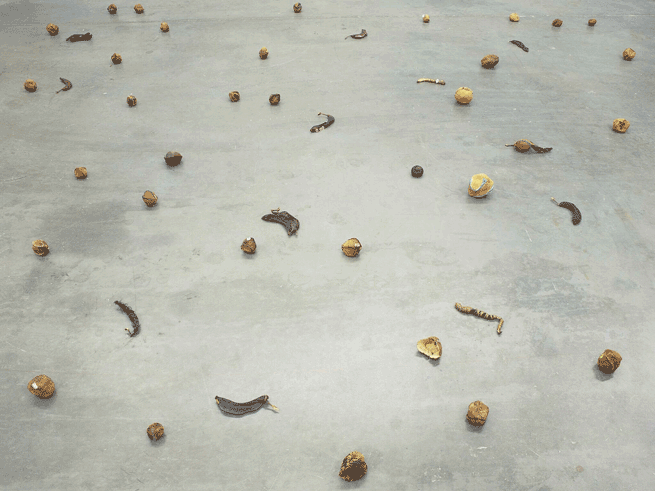
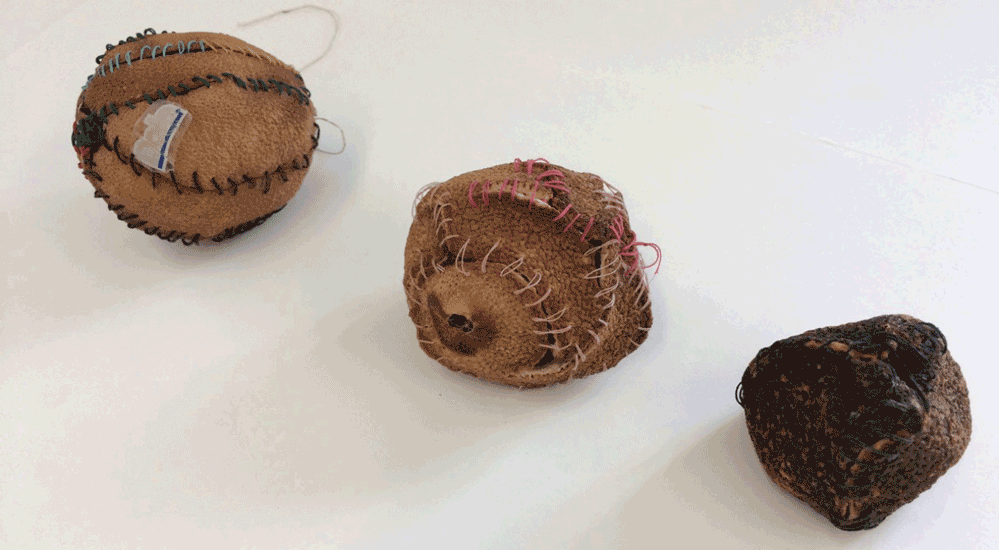
Stroke is a reoccurring installation artwork conducted by the Scottish artist Anya Gallaccio. The work was first presented in 1994, but was recently re-exhibited in the fall of 2019 at Blum & Poe gallery in Los Angeles. To create the installation, Gallaccio covers exhibition walls with thousands of repeated brushstrokes of melted chocolate. Gallaccio contends that she uses organic materials in her overall practice “to subvert and reframe that male-dominated moment in art history.” Furthermore, she pulls materials from a so-called “feminine, domestic space,” to “challenge a masculine past and reclaim a place in history. In Stroke, chocolate is used to play with the idea that perceptions of desire are disconnected from reality. Gallaccio creates a seemingly spectacular and whimsical room made of chocolate. In reality the room subverts “the viewer’s appetite for pleasure.” The fantasy of a room made from edible chocolate “is contrasted with the strikingly rich, dark color of the walls and their heavy, sometimes putrid, smell.”


Food art is studied for its distinctive properties, evocative nature, and progressive form. For centuries, the evolving science behind art mediums has seen food materials as a base to create “new sorts of palettes and textual sources,” in painting, photography, and sculpture . Furthermore, throughout history, foodstuffs have been held with high regard for their “aesthetic qualities and their power to signify”. The persistence of food material has changed the way that artists create art, exhibit art, and contemplate the meaning, value, and essence of the art object.
